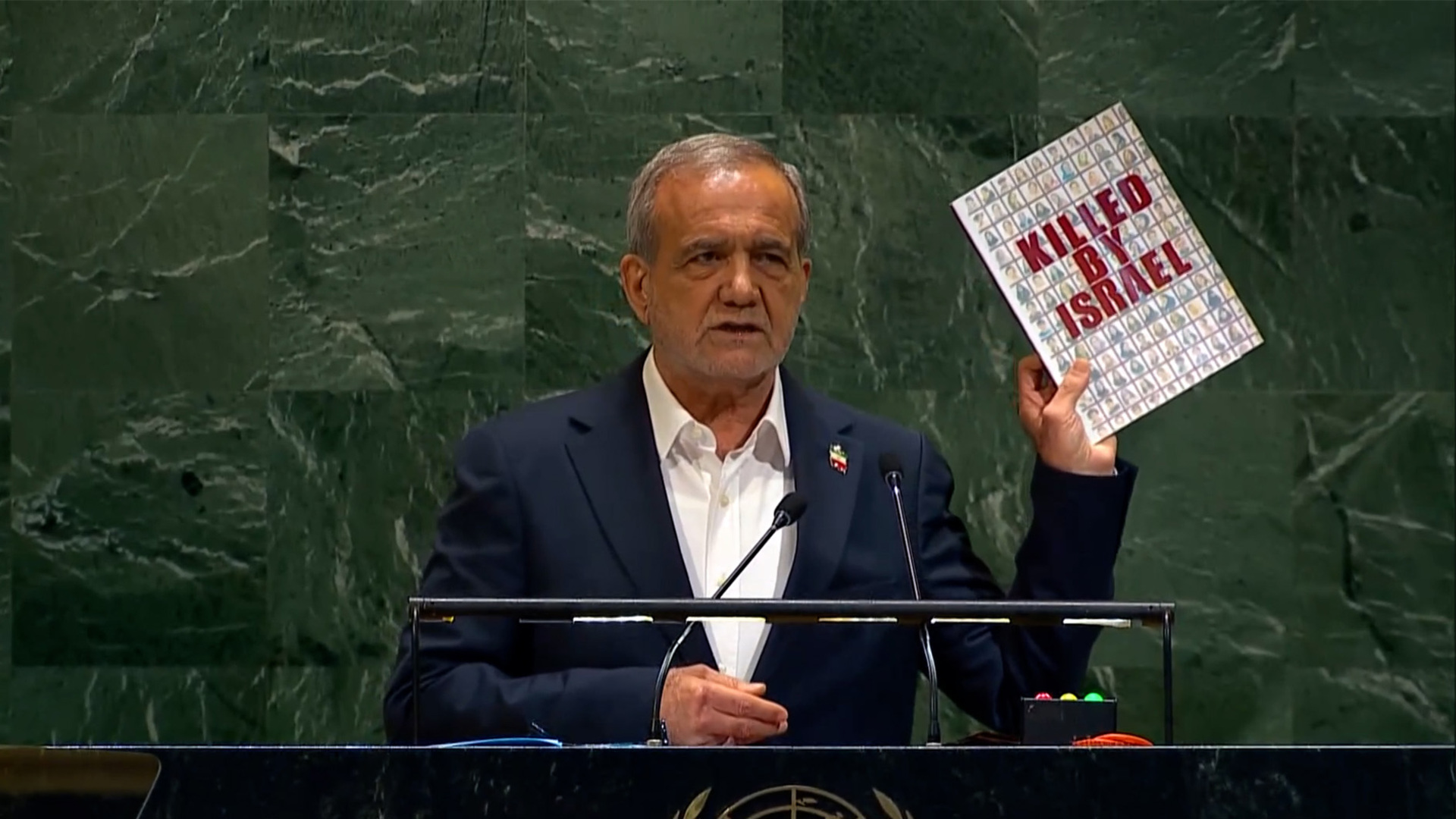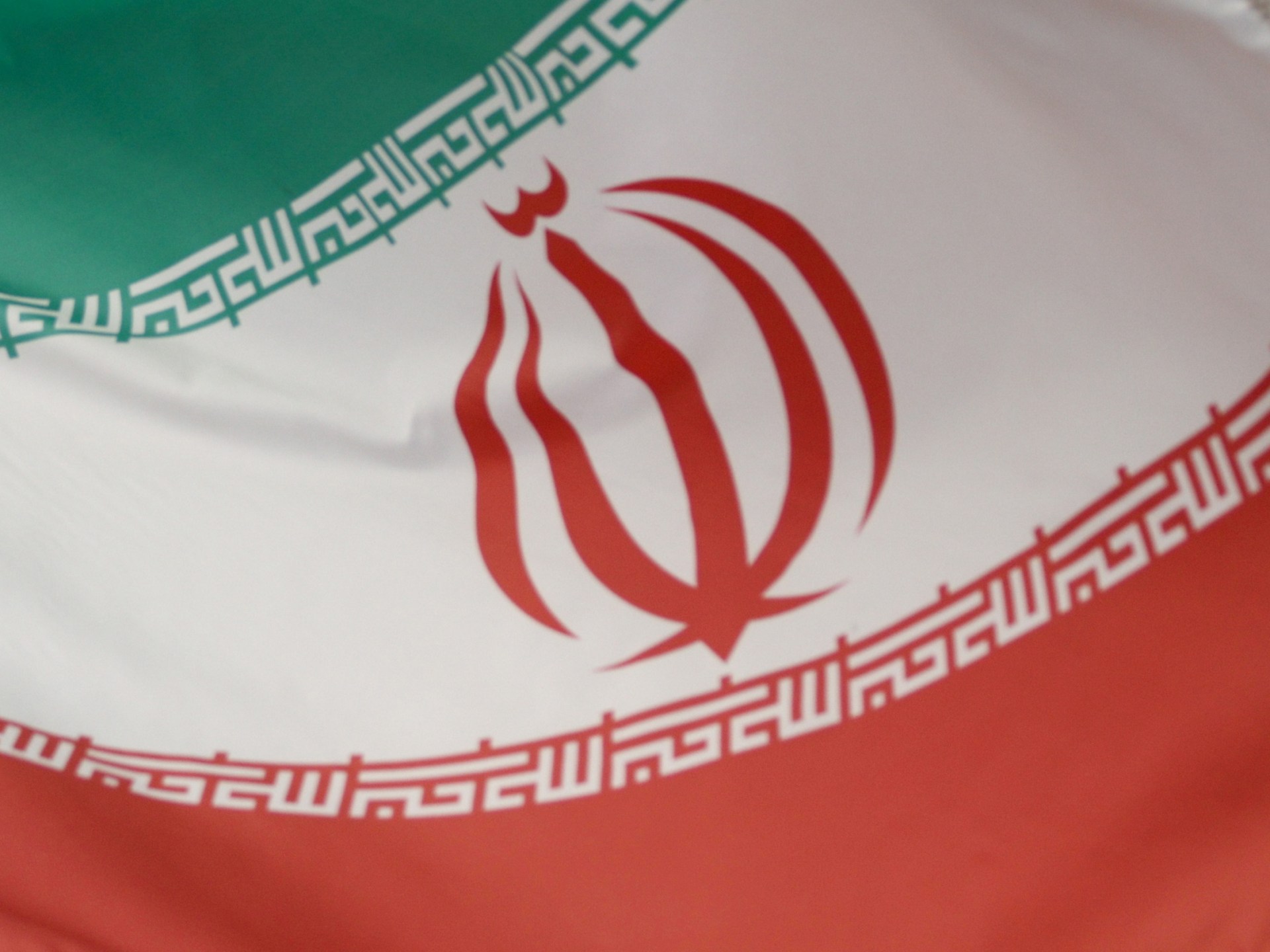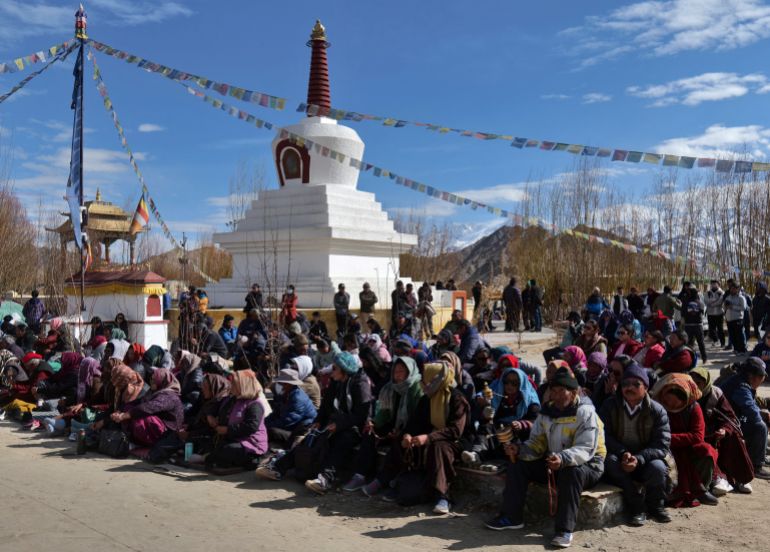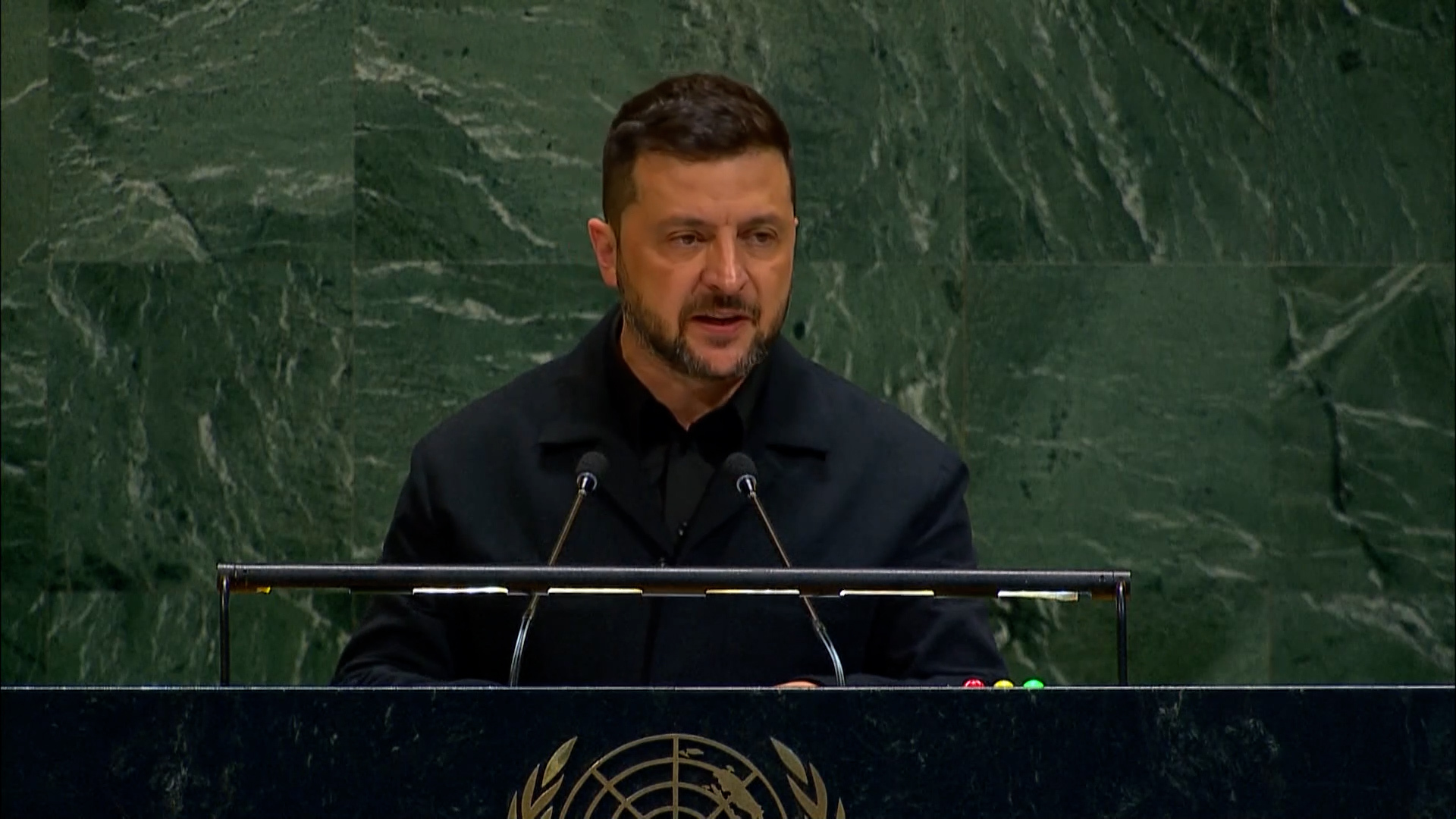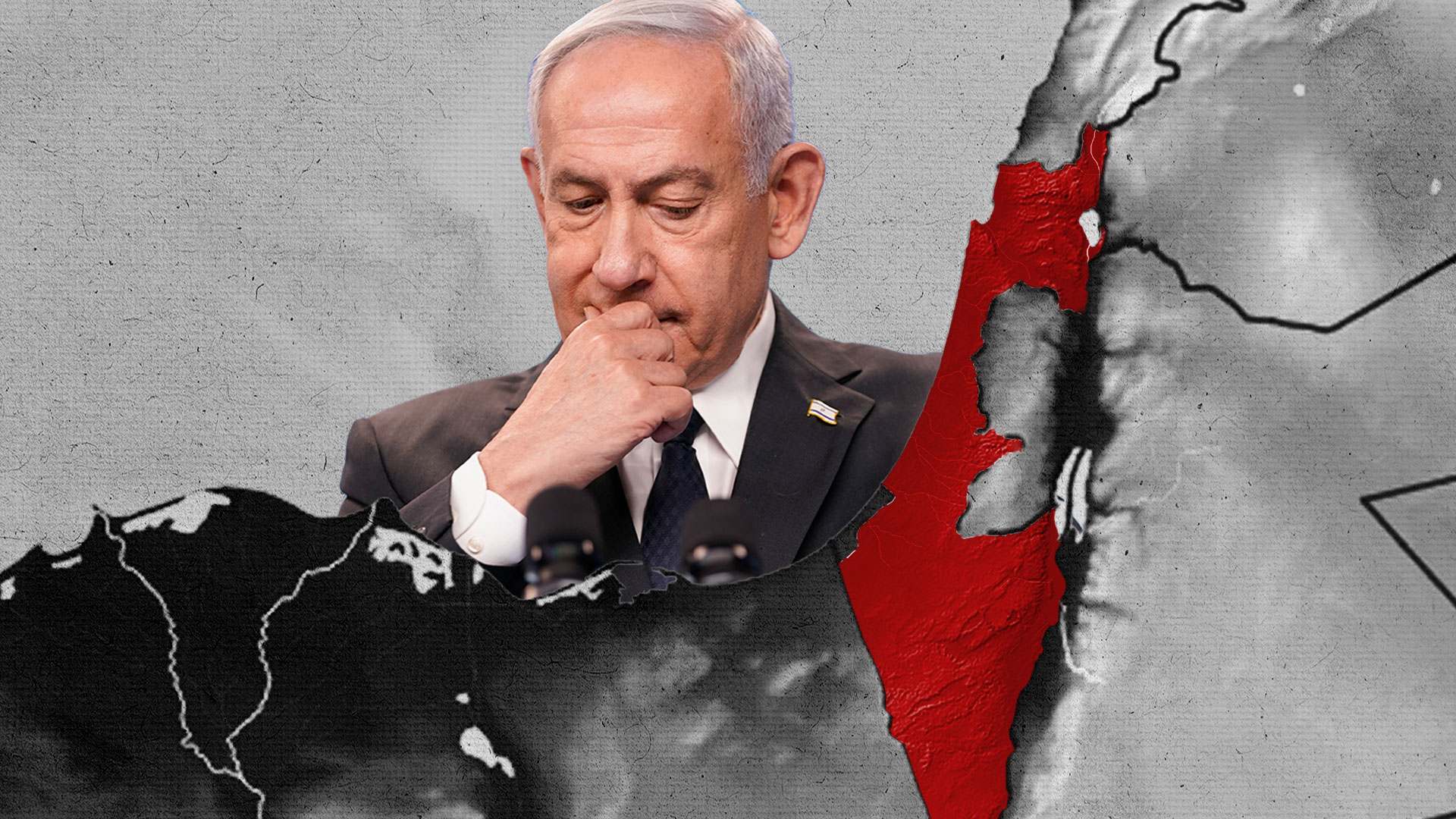Kyiv, Ukraine – United States President Donald Trump has abruptly shifted his view on the Russian-Ukrainian war by saying Kyiv could restore its borders.
For the first time, Trump said on Tuesday that Ukraine could win back the one-fifth of its territory it has lost to Russia since the 2014 annexation of Crimea and the Kremlin’s support to separatists and its 2022 full-scale invasion.
Recommended Stories
list of 4 itemsend of list
“Ukraine, with the support of the European Union, is in a position to fight and WIN all of Ukraine back in its original form,” Trump wrote on his Truth Social network.
But political and military analysts are sceptical about his newfound conviction.
Trump’s words absolutely do not signal a U-turn, according to Volodymyr Fesenko, head of the Kyiv-based Penta think tank.
“Don’t consider Trump’s words as a signal to return to the 1991 borders,” he told Al Jazeera.
“They’re a rhetoric formula Trump uses to express sympathies, positive emotions towards Ukraine,” he said. “They’re a signal, a way of pressuring [Russian President Vladimir] Putin, in a rhetoric way so far.”
“There won’t be any revolutionary and sensational steps, no game-changer, no single decision that can change everything,” Fesenko said.
Trump has insisted that it is not Washington but Brussels and NATO that have to support Kyiv to return its territories.
“Trump thinks like a businessman. He sees and receives information that Russia’s economic situation is getting worse,” Fesenko said.
The combined effect of Western sanctions, slower domestic growth, soaring inflation, budget deficits and higher interest rates have hobbled Russia’s economy this year, cooling down its war-fuelled growth.
“Trump doesn’t want Ukraine to win the war. He wants the war to be over,” Fesenko said. “His goals didn’t change. That’s why he sends signals to Putin.”
In response to Trump’s post on Tuesday, the Kremlin said Russia has no choice but to continue the war and called the US leader’s comment “mistaken”.
“There’s a tug-of-war regarding Trump. For now, we tugged him towards us a bit. In August, in Alaska, Putin did,” Fesenko said, referring to the August 15 summit between Trump and Putin that broke Russia’s international isolation but did not yield any positive results for Kyiv.
Trump is pushing the European Union to apply more economic pressure on Russia, he said, adding that Washington may join Brussels later with coordination of sanctions and a boost in military aid.
Trump “won’t play on our side. He will help, yes – indirectly,” he said.
To fully help Ukraine, Trump will also have to change his ways, Ukrainian analysts said.
“He needs to invest more, talk less, but so far, it’s the other way around,” Lieutenant General Ihor Romanenko, former deputy head of the Ukrainian military’s General Staff, told Al Jazeera.
Trump’s U-turn does not reflect his personal assessment because “he isn’t capable of such an assessment. This is a realistic plan of someone on his team,” Romanenko said, referring to experts in the Pentagon, intelligence services or some members of the US Congress.
To make sure Ukraine fully uses Western aid, Kyiv has to do its “homework”, Romanenko said.
Steps include the “full and fair mobilisation” of all men of fighting age, the switch of Ukraine’s economy to “military mode” and full introduction of martial law, which may include harsher punishments for draft dodging and corruption, he said.
This could prove difficult because mobilisation and conscription efforts have been heavily criticised recently.
‘Impossible to contemplate the return to 1991 borders’
Meanwhile, Russia’s summer offensive is nearing completion.
“They didn’t succeed in what they planned, but they still have resources. We see how they advance,” Romanenko said.
In March, Putin claimed that the upcoming offensive may “finish off” the Ukrainian armed forces and Kyiv’s resistance.
In the east, Russia fully took over Luhansk, the smallest of the regions it still occupies.
It is aggressively advancing towards several key cities and towns in the neighbouring, much larger region of Donetsk.
“They won’t do it fast. Their forces aren’t what they used to be,” Romanenko said.
Russian forces have occupied about 2,000sq km (772sq miles) this summer, creating a springboard for their offensive in the autumn and winter.
They approached key strongholds in Donetsk or moved to encircle them, entered nearby Dnipro, and advanced in the southern Zaporizhia region, thus outlining the areas of fighting for the next six months, according to Nikolay Mitrokhin of Germany’s Bremen University.
Therefore, Ukraine will desperately need US-made HIMARS precision-guided rockets, armoured vehicles and Patriot air defence systems to protect Ukrainian cities and “hunt down” Russian warplanes dropping heavy glide bombs, he said.
And there is also a need for more F-16 fighter jets, even if they’re “obsolete and decommissioned”, to destroy Russian drones and missiles as well as 100,000 all-terrain vehicles to be used near the front line, he said.
However, even if Kyiv does get all of that, it’s “impossible to contemplate the return to the 1991 borders”, Mitrokhin told Al Jazeera.
The domination of drones makes the use of armoured vehicles impossible for major breakthroughs to regain territory, he said.
Another factor is the “low tactical skills of Ukrainian top brass”, he said, adding that Ukrainian commanders “have a very low level of responsibility for the lost weaponry and even the lost lives”.
He referred to the failure of Kyiv’s counteroffensives in late 2022 and 2023 that resulted in colossal losses of manpower and Western weaponry.
Ukrainian forces are capable of succeeding only in local operations when Russia “snoozes,” he said, referring to the liberation of the northeastern town of Izium in 2022 and its surprise advance in the western Russian region of Kursk in 2024.
Ukraine can successfully advance only in places without a massive presence of Russian troops, such as the strategic Kinburn Peninsula in the southern region of Kherson, where the Dnipro River flows into the Black Sea.
